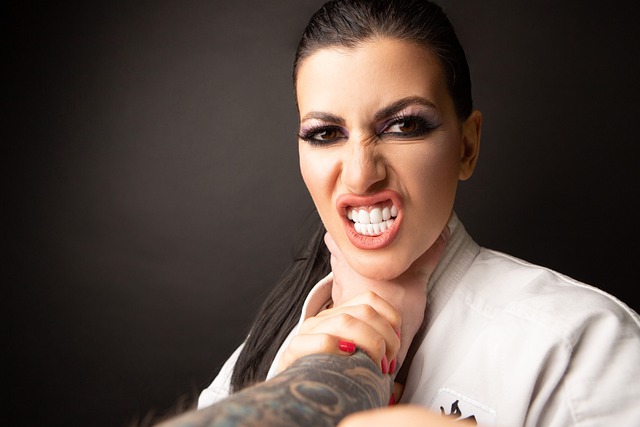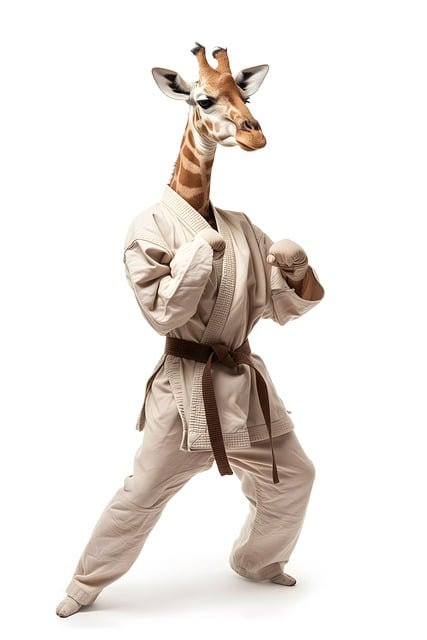Martial arts uniforms, commonly known as 'gi,' are essential for practice and a hallmark of respect and tradition within the martial arts community. The traditional white gi, consisting of a jacket, trousers, and an obi belt, is universally recognized and indicates the wearer's rank, facilitating movement and allowing instructors to assess technique. While the classic design has a functional purpose, variations in materials cater to different martial arts like judo or Brazilian jiu-jitsu, each with its unique demands. These uniforms connect practitioners globally, transcending cultural differences through their universal recognition. Beyond the traditional gi, specialized uniforms are tailored for specific disciplines, enhancing safety and functionality while maintaining the essence of tradition. Martial arts uniforms thus bridge the gap between honoring historical practices and embracing modern developments in these combat sports. The article delves into the evolution and significance of these garments, underscoring their role in promoting discipline, respect, and adherence to tradition, as well as their functional aspects in terms of material selection for comfort during training. They reflect an individual's rank and dedication to martial arts, serving as a visual testament to one's journey within the art. In the case of karate specifically, the keikogi, or training jacket, is central to practice, made from heavyweight cotton for comfort and mobility, with cultural symbolism in its white color and additional formal attire like hakama for higher-ranked practitioners. The obi belt further denotes skill level and rank, ensuring that karate movements are performed with precision and clarity. Authentic martial arts uniforms thereby visually represent the wearer's commitment to the discipline and enhance the overall experience of practicing karate.
Karate practitioners around the globe engage in this ancient discipline with a sense of tradition and respect for its origins. A pivotal element in this martial art’s practice is the uniform donned by each participant, serving both functional and symbolic purposes. This article delves into the world of martial arts uniforms, specifically focusing on the karate gi. We will explore the evolution from traditional gis to modern adaptations, the key characteristics that define an authentic karate outfit, and the significance of color and fabric in these garments. Join us as we shed light on how these uniforms have shaped the martial arts experience and why they remain integral to the practice of karate today.
- Exploring the Essentials of Martial Arts Uniforms: The Gi and Beyond
- The Evolution of Karate Attire: From Traditional Gis to Modern Uniforms
- Key Characteristics Defining Authentic Karate Outfits
- Understanding the Significance of Color and Fabric in Karate Uniforms
Exploring the Essentials of Martial Arts Uniforms: The Gi and Beyond

Martial arts uniforms, commonly referred to as ‘gi’ in karate and other Japanese martial arts, serve as more than mere attire; they are a symbol of respect for tradition and discipline within the practice. The gi typically consists of a jacket, trousers, and a belt, known as an obi, which indicates the wearer’s rank. While the traditional white cotton gi is most common, variations exist to cater to different disciplines and preferences, such as judo or Brazilian jiu-jitsu. The design of the gi facilitates movement and allows instructors and peers to observe form and technique during practice. It is a uniform that unites practitioners globally, transcending cultural and linguistic barriers through its universal recognition in the martial arts community.
Beyond the traditional gi, martial arts uniforms can also refer to other specialized garments tailored for specific disciplines. For instance, judo practitioners may wear jackets with less cotton content for better grip during throws, while Brazilian jiu-jitsu athletes might opt for rash guards to prevent mat burns and ensure comfort during submission grappling. Each uniform adheres to the principles of functionality, safety, and respect for the art, ensuring that whether one is practicing karate or another martial art, the uniform they wear honors the tradition while accommodating the evolving nature of the sport.
The Evolution of Karate Attire: From Traditional Gis to Modern Uniforms

Key Characteristics Defining Authentic Karate Outfits

Karate outfits, often referred to as martial arts uniforms, serve as more than mere garments; they are a representation of tradition and functionality within the practice of karate. Authentic karate uniforms, known as keikogi or “training jacket” in Japanese, are characterized by their simplicity and practicality. They are typically constructed with a heavyweight cotton material that allows for ease of movement during training. The traditional keikogi features a button placket running from the neck down to just above the waist, along with a wide collar that helps to absorb perspiration. These uniforms often come in a plain white color, symbolizing purity and humility, although variations in colors and designs can be found among different schools or styles of karate.
In addition to the keikogi, martial arts uniforms are commonly paired with hakama for advanced practitioners or instructors, which are divided skirts resembling a wide belt that falls just above the knees. The hakama is a symbol of rank and respect within the karate community and adds an element of formality to the practice. Completing the ensemble, karateka, or practitioners, typically wear a belt, known as a obi, around the waist, which indicates their level of skill and proficiency in the martial art. The choice of belt color is a clear indication of the wearer’s rank within the discipline. Martial arts uniforms are not only emblematic of the practitioner’s commitment but also ensure that the movements of karate are executed with optimal clarity and precision, making them indispensable in the art form.
Understanding the Significance of Color and Fabric in Karate Uniforms

Martial arts uniforms, particularly those used in karate, serve as a symbol of tradition and evolution within the discipline. This exploration has shed light on the key characteristics that define an authentic karate outfit, from the evolution of its design to the significance of color and fabric. It is clear that while the karate gi has remained largely consistent, reflecting the rich history and principles of karate, modern variations continue to adapt to the needs of practitioners worldwide. These uniforms not only facilitate the practice but also pay homage to the martial arts’ origins and culture. As a final note, whether in a traditional dojo or a contemporary gym, the karate outfit stands as a testament to the enduring legacy of this discipline, ensuring that its essence is preserved for future generations through the universal language of martial arts uniforms.
